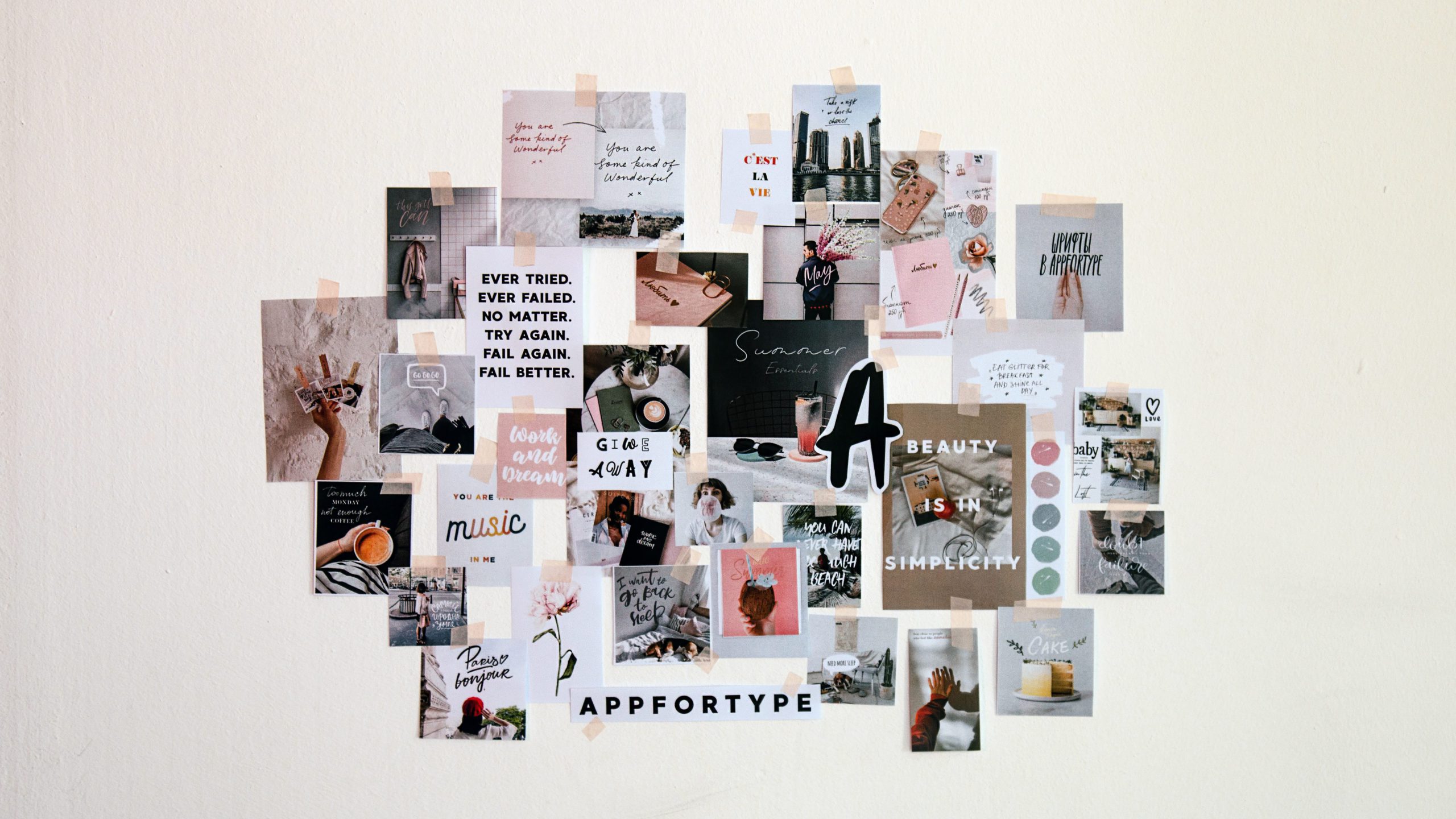“A brand is a living entity, and it is enriched or undermined cumulatively over time, the product of a thousand small gestures.” – Michael Eisner
What’s a ‘brand identity‘?
Put simply, brand identity is what your consumers see. It is the amalgamation of all the carefully selected visual elements used to tell the story of your brand. This includes design components like typography and color palette, logo, product packaging, web design, social media graphics, marketing materials, and more. It also includes brand artifacts that consumers can hear, smell, taste, feel, and watch in motion.

Brand, Branding, and Logo
These terms are mistakenly interchanged with Brand Identity all the time even by veteran marketers. It’s important to know their differences to thoroughly understand Brand Identity.
Your Brand is the intangible relationship between you and the consumer. It encompasses all the experiences, emotions, thoughts, and values people associate with your company.
In a marketplace of infinite choices, your brand is what convinces consumers to choose you.
Take Apple, for example. Arguably, their products have little differentiation from other gadgets in the market. In fact, their phones and laptops are significantly more expensive than what other companies have to offer.

Despite this, fanatics still camp outside their stores the night before product releases to buy the latest versions of iPhones and Macbooks.
It is because of the emotional connection they’ve built with their consumers that they’re able to form such strong brand loyalty.
These emotional connections, however, aren’t formed overnight. They are often the result of a carefully-crafted, long-term strategy. This strategy is called branding. It is the end-to-end process of creating, defining, and communicating your brand. Companies have spent up to millions creating the perfect brand strategy. Many don’t even get it right the first time.
Lastly, a Logo is just one aspect of your brand identity. It is your most visible and most consistent visual element.

Explaining logo creation is an entire blog post all on its own. But, to summarize, great logos are those that are distinct, logical, versatile, and well-designed. Similar to all other aspects of branding, they require extensive research and close attention to detail.
How do I build my brand identity?
Now that we’ve extensively defined all relevant terms, it’s time to build your brand identity.
1. What business?
This may come off as an obvious question, but you’d be surprised by just how many entrepreneurs don’t have a clear answer.
Ask yourself 3 simple questions:
- Who is your target market?
- What is your value proposition?
- What is your business model?
No business is meant to target everyone. No matter how universally-appealing your product appears to be, there will always be a segment of the population that your product or service appeals to most. This segment is what you call your target market. It is the group of consumers that you direct most, if not all, of your marketing, product development, and selling efforts towards.
Selecting your target market often requires extensive research, and a grueling process of trial and error. When starting out, some brands prefer beginning with a wide net then slowly narrowing down their ideal market based on the demographic of repeat customers. Others perform multiple surveys and focus group discussions even before their products come out. Either way, the goal is to end up with a clearly defined segment.
Value proposition refers to your business’ unique selling proposition. It is the aspect, feature, or promise of your product that differentiates you from all other competitors in your industry. It can be as obvious as colorful packaging or good-tasting food, or can be as complex as chemical make-up or a cash-back system.
A strong value proposition solves an important pain point or gap in the market relevant to your target market. A good example of this is Uber.

For consumers, Uber solved everything that sucked about public transportation. It was transparent, it was safe, and it was as convenient as tapping a few buttons on their phone. However, your value proposition doesn’t have to be feature-based all the time. Sometimes, what products offer is a lifestyle or something similarly intangible.
For example, look at most luxury brands. What they offer is the dream of being a part of society’s upper crust.

Lots of people get a kick out of capturing the envy of friends and family when wearing expensive pieces. Others see luxury purchases as a personal achievement of some sort — a physical representation of years of blood, sweat, and tears.
Finally, your business model is all about how you’re able to sustain operations. Your value proposition and target market are important components of this, but others to consider are your revenue sources, distribution channels, cost structure, key activities, and partners.
Before the internet, the typical business model was a simple brick and mortar store. If anyone wanted to buy anything, they had to leave their homes and visit physical outlets. Over time, businesses became more innovative with the way they made money and sold their products. Many companies today operate solely online, selling their products either through their own website or app, or through eCommerce platforms.
Some businesses don’t even directly sell to consumers anymore. They offer free services and make money from ads or data, instead.
A simple Google search can get you plenty of case studies to guide you in choosing the right business model. But don’t just look for all the success cases! It’s equally important to learn from failed business models to know what mistakes to avoid.
2. What personality?
Once you’ve established what your business is, it’s time to determine your brand’s personality. The easiest way to do this is by personifying your brand, a.k.a. imagining your brand as a real, living human being.
Start by determining all the basics. How old are they? Where do they live? How much do they make? What do they work as? Are they married? Do they have kids? What gender would they be?
Then, think about what they’d look like. Would they be tall? Young or old? Would they wear sweatpants or business formal? Are they fashion-forward? Do they have body piercings? A beard?
Next, decide activities and interests. Do they like sports? Do they watch TV? Do they hangout at underground bars? Do they shop for leisure or only out of necessity? Do they exercise? Do they travel? What shows do they watch? What music do they listen to?
Finally, nail down all the intangibles. What language do they speak? Do they use an authoritative or casual tone? Are they conservative or liberal? Would I befriend this person or respect them from afar? What does this person make me feel?
Some companies put all this together in a mood board for easier visualization. You can place relevant images, videos, quotes, textures, patterns, color palettes, and shapes.

Digital mood boards are great if you prefer to use a variety of media and if you work with a large, dispersed team. However, lots of companies, especially those in architecture or fashion design, still create traditional, physical collages because of the extra emphasis they place on material and texture.
3. What elements?
Here comes the fun part — putting together the overall look of your brand. Especially for emerging businesses, the first 6 elements you need to settle are: color palette, typography, logo, pattern, graphic style, photography style.

The goal is to create a set of brand elements that complement each other and reflect the same personality. When elements are inconsistent, consumers are left confused and unsure of whether or not they can trust your brand’s message.
It helps to be aware of the meanings and symbolism attached to each element. For example, when it comes to colors, orange is typically associated with youth and energy, while blue with reliability and trust.
Even fonts mean different things. For example, Serif fonts (like the one I’m using right now) tend to feel more formal, sophisticated, and mature. They’re typically used for titles, headlines and other texts that require emphasis. They also give off an authoritative tone.
What if I’m not a designer? I don’t know the first thing about creating color palettes or picking the right fonts!
You don’t need extensive design experience to choose the right elements. In fact, there are tons of free tools online to help you out. Color palette or font pair generators are good places to start when you seek inspiration. Just keep randomizing until you find sets that match your brand personality. Then, simply tweak whatever you need to tweak.
If you’re feeling more adventurous and want to start from scratch, there are also tons of tutorials online. Use relevant keywords like ‘for beginners’ or ‘101’ while searching. This ensures that you come across the right articles for your level of experience. You can also check out useful online resources such as the best 18 free SVG illustrations sites (2021) to find interesting elements for your branding activities. Or, Videomaker and Designmaker to get striking branding materials. Usually, color palette and font pair generator sites will have blog pieces that explain how to choose elements, as well.
The same applies when it comes to graphics, patterns, and photographs.

4. What touchpoints?
Another essential aspect of brand identity is choosing the appropriate channels to interact with your consumer. These channels are called touchpoints. Each one serves a unique purpose, ranging from increasing brand awareness, encouraging purchase, ensuring quality, and so on. Examples include your website, social media pages, email newsletters, product reviews, online help centers, offline marketing activities, and many more.
Not all touchpoints are within your control. Others – like product reviews – are in the hands of your consumer. Therefore, it’s important that every touchpoint within your control maintains healthy customer satisfaction.
To identify your touchpoints, try putting yourself in the shoes of your ideal consumer.
- What major problems do you wish to solve?
- What media do you consume the most?
- What would motivate you to purchase a product?
- Where would you go after purchasing a product?
Putting all this together gives you a clear customer journey map that you can use to effectively communicate with your target audience. Most brands will have a combination of the following:

Once you have a list of ideal touchpoints, check if they have these 4 crucial elements.
- Appropriate – complements the tone and personality of your brand
- Relevant – matches the needs and habits of your consumer
- Meaningful – serves its function as a touchpoint, e.g. provides useful information or creates an emotional connection
- Endearing – creates a bond or relationship with your consumer
5. Update when necessary!
You’re finally done! You’ve identified your core business, crafted your brand personality, created all your elements, and selected your consumer touch points. Relish in the moment as you’ve finished laying the foundation of your brand.
But your job doesn’t end there.
Every couple of years, update your elements to keep up with the times. Your brand, just like your consumer, is a living entity – always growing, evolving, and adapting to the ever-changing needs of the world.
If you’re lost, just read through this article again and follow the steps.
In no time, you’ll have developed a strong, memorable brand identity.
Read More:
